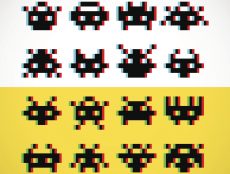
Articles
What the New Guidelines on Distance Education Mean for Schools
By Cait Etherington
March 13, 2018
In July 2018, new guidelines on distance education will come into effect, but with only a few months left before the new rules become law, many colleges and universities are still wondering how to interpret the new regulations.
The new guidelines were drafted in 2016 in response to States expressing growing concerns about their ability to identify which out-of-State providers are operating in their jurisdictions and whether these providers are in fact preparing students for employment, including employment in licensure-based professions such as teaching. The new requirements are also designed to address other question, including those concerning the academic quality of these programs and the process of handling student complaints in the case of out-of-state institutions. While there is certainly an urgent need to bring clarity to these questions, at present, the proposed guidelines may simply be adding to the confusion.
Summary of Proposed New Guidelines on Distance Education
A summary of the new regulations posted by the Office of Postsecondary Education, Department of Education in 2016, when the new guidelines were first rolled out, highlighted five key changes to the existing law.
First, as stated, “any institution offering distance education or correspondence courses” must “be authorized by each State in which the institution enrolls students,” if authorization is required.
Under the new regulations, the term “State authorization reciprocity agreement” has been radically redefined.
The other regulations include requiring institutions to “document the state process for resolving complaints from students”. Also, the regulations state that additional locations or branches “located in a foreign location to be authorized by an appropriate government agency of the country where the additional location or branch campus is located.”
But what do these guidelines actually mean?
Interpretation of the Guidelines
First, under the new regulations, all institutions need to disclose information to students who are enrolled in programs that also have state licensure requirements (e.g., nursing and education programs). In short, if a student is enrolled in a WGU teacher education program but their home state doesn’t recognize their WGU’s degree as a step in the licensure process, WGU must ensure the student knows before they enroll.
What continues to trouble many educational institutions, however, are the finer details. First, there is some ambiguity about what it means to reside in a specific state. If a student is a permanent resident of Indiana but resides in New York over the summer while working at a camp and takes an online course through a provider such as WGU, are they residing in a state where WGU is authorized to operate or not? Another lingering question regards transparency about credentialing. It is clear that institutions must inform students if they are taking a program that will not enable them to practice teaching or nursing, for example, in their state, but it is not entirely clear how this information needs to be conveyed and at what point in the process.
While there appears to be no desire to postpone the rollout of these new guidelines on distance education and correspondence courses beyond July 2018, as reported on Inside Higher Education last week, the federal government is currently taking a second look. Liz Hill, a spokeswoman for the federal Department of Education, told Inside Higher Education that the department “is aware of the many concerns expressed” and on this basis, “Secretary DeVos has called for a top-to-bottom review of the department’s regulations.”









Nice and informative blog post. Was looking for some important information and visited your this page having crucial and knowledgeable content. Really written well. Share more alike this. Thank you and keep posting.